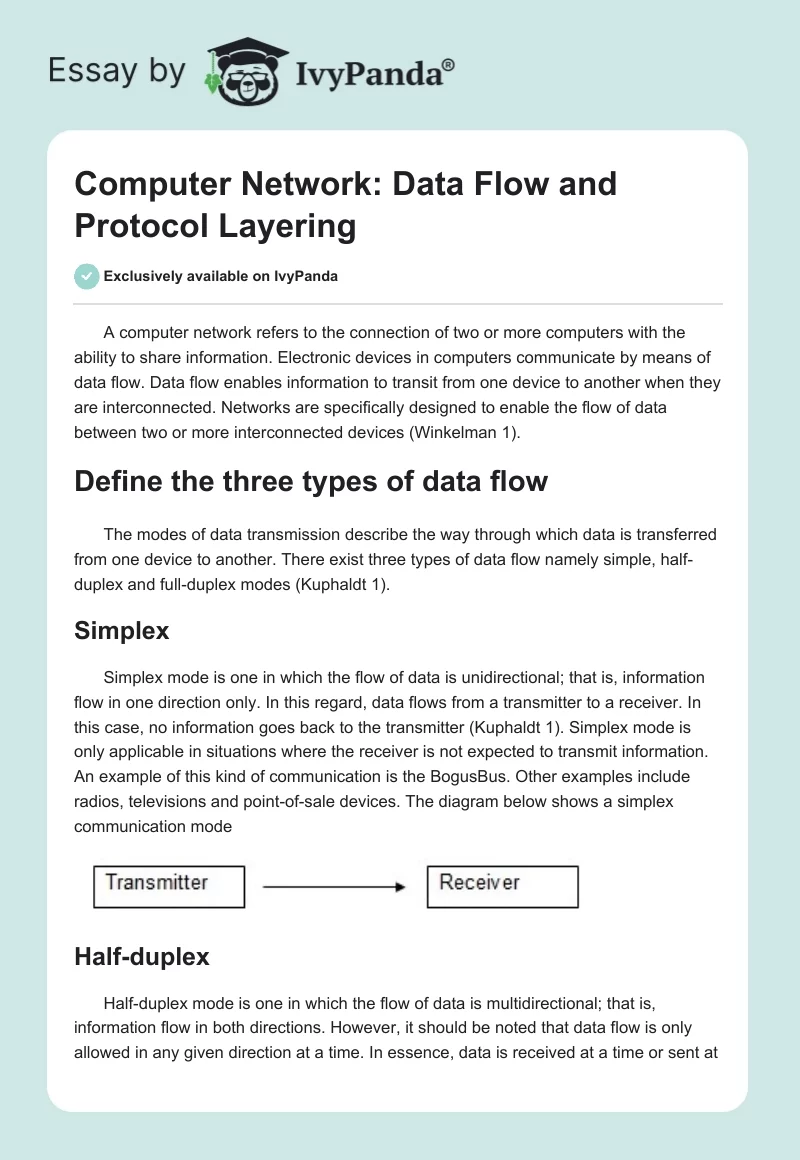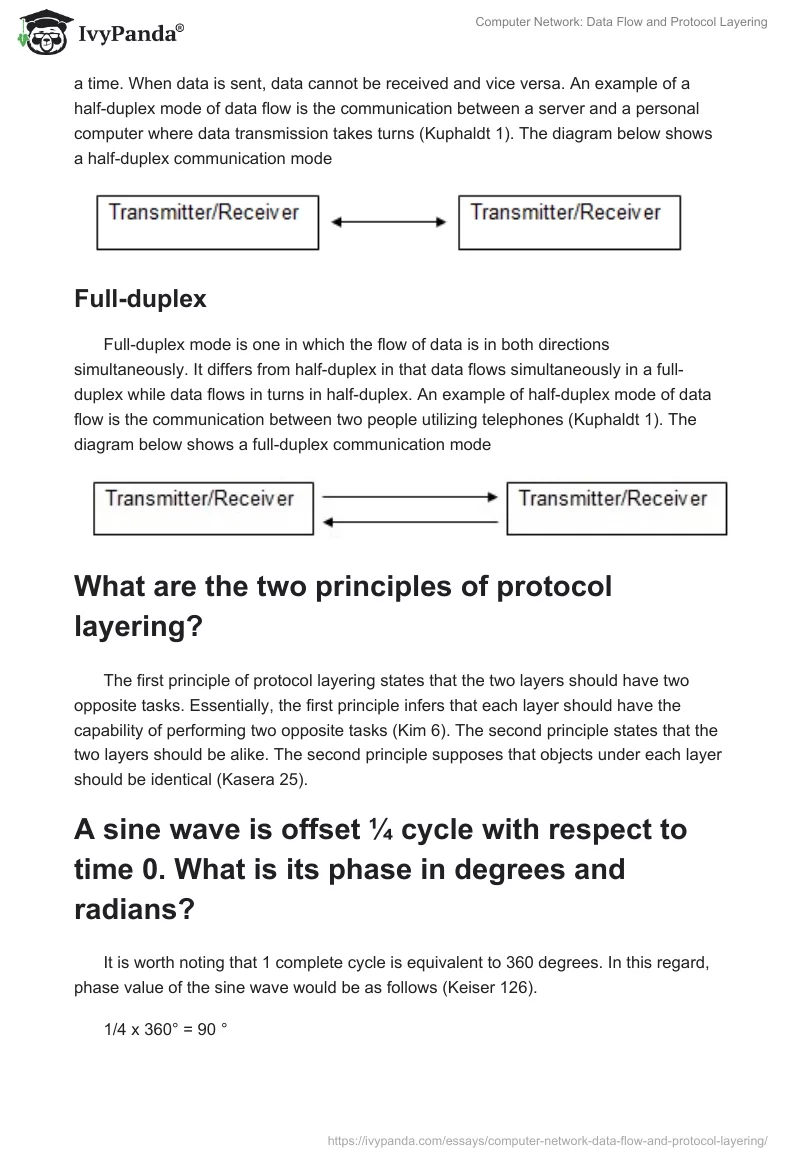A computer network refers to the connection of two or more computers with the ability to share information. Electronic devices in computers communicate by means of data flow. Data flow enables information to transit from one device to another when they are interconnected. Networks are specifically designed to enable the flow of data between two or more interconnected devices (Winkelman 1).
Define the three types of data flow
The modes of data transmission describe the way through which data is transferred from one device to another. There exist three types of data flow namely simple, half-duplex and full-duplex modes (Kuphaldt 1).
Simplex
Simplex mode is one in which the flow of data is unidirectional; that is, information flow in one direction only. In this regard, data flows from a transmitter to a receiver. In this case, no information goes back to the transmitter (Kuphaldt 1). Simplex mode is only applicable in situations where the receiver is not expected to transmit information. An example of this kind of communication is the BogusBus. Other examples include radios, televisions and point-of-sale devices. The diagram below shows a simplex communication mode

Half-duplex
Half-duplex mode is one in which the flow of data is multidirectional; that is, information flow in both directions. However, it should be noted that data flow is only allowed in any given direction at a time. In essence, data is received at a time or sent at a time. When data is sent, data cannot be received and vice versa. An example of a half-duplex mode of data flow is the communication between a server and a personal computer where data transmission takes turns (Kuphaldt 1). The diagram below shows a half-duplex communication mode

Full-duplex
Full-duplex mode is one in which the flow of data is in both directions simultaneously. It differs from half-duplex in that data flows simultaneously in a full-duplex while data flows in turns in half-duplex. An example of half-duplex mode of data flow is the communication between two people utilizing telephones (Kuphaldt 1). The diagram below shows a full-duplex communication mode

What are the two principles of protocol layering?
The first principle of protocol layering states that the two layers should have two opposite tasks. Essentially, the first principle infers that each layer should have the capability of performing two opposite tasks (Kim 6). The second principle states that the two layers should be alike. The second principle supposes that objects under each layer should be identical (Kasera 25).
A sine wave is offset ¼ cycle with respect to time 0. What is its phase in degrees and radians?
It is worth noting that 1 complete cycle is equivalent to 360 degrees. In this regard, phase value of the sine wave would be as follows (Keiser 126).
1/4 x 360° = 90 °
The phase value would be 90 , however, to compute in radians, it would be as follows
List three properties of Infrared waves
Infrared waves are electromagnetic waves, which extend from 0.75 micrometers to 1000 micrometers (1millimeter). Infrared waves also have a frequency range of between 300 Gigahertz and 400 Terahertz. Infrared waves have another property in that they can be absorbed or emitted by some atmospheric molecules that change rotational movements. These molecules include carbon dioxide, ozone molecules, water vapor and methane. Additionally, infrared waves also have thermal properties. Warm objects or hot objects emit infrared radiation (Kurtus 1).
Works Cited
Kasera, Sumit. Communication Networks: Principles and Practice, New York City, New York: Mc Graw-Hill education, 2006. Print.
Keiser, Gerd. Local Area Networks. 2nd ed. 2002. New York City, New York: Mc Graw-Hill education. Print.
Kim, Yeongkwun. Chapter 2: Network Models. 2013.
Kuphaldt, Tony. Data Flow: Chapter 14-Digital Communication. 2016.
Kurtus, Ron. Infrared Radiation. 2010.
Winkelman, Roy. Chapter 1: What is a Network? 2013.


